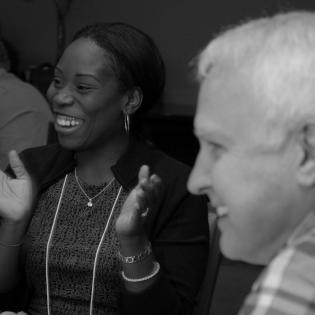Human Rights Through History
Conducting research about activists from different cultures helps youth recognize Human Rights and the relationship to philanthropic values.
The learner will be able to
- correlate philanthropy to human rights work.
- identify key components of a human rights activist's work
- Social Studies text or reference material about Bartolomé de Las Casas and other Human Rights activists
- group copies of Character Web (handout).
A Summary of United Nations Agreements on Human Rights http://www.hrweb.org/legal/undocs.html
Instructions
Anticipatory Set:
Read and discuss a summary of the actions of Bartolomé de Las Casas as a human rights activist for Indigenous people. He fought for the rights of the native peoples to be treated humanely by Spanish soldiers.
Define the term human rights. Discuss how fighting for human rights is an act of philanthropy (giving time, talent, or treasure and taking action for the common good). Many people over time have spoken up to fight against injustice.
Sometime unfair treatment is obvious. Name several examples of unjust treatment of groups of people. Examples: enslaved Africans, systemic racism, Jewish citizens in WWII Germany, women in corporate America, Japanese-Americans in internment camps.
Sometimes it's harder to identify human rights abuses. For example, some people are passed over for jobs or opportunities because of their race or gender.
Form small groups to learn about and make a poster of a human rights leader.
- Read about a human rights leader (examples: Amanda Gorman, Greta Thunberg, Bartolomé de Las Casas, Gandhi, Martin Luther King, Eleanor Roosevelt, Harriet Tubman, Nina Simone, Cesar Chavez, Mother Theresa, Bryan Stevenson, or a third-sector philanthropy organization like Amnesty International)
- Make a character web of their actions and contributions to organize thinking (handout)
- Write a statement that describes their purpose and work.
- Design a symbol that represents their work.
- Type facts and print on separate squares.
- Assemble to make an informational poster. (rubric below)
Philanthropy Framework
-
Strand PHIL.I Definitions of Philanthropy
-
Standard DP 01. Define Philanthropy
-
Benchmark E.3 Recognize that citizens have a responsibility for the common good as defined by democratic principles.
-
-
Standard DP 02. Roles of Government, Business, and Philanthropy
-
Benchmark E.6 Explain why acting philanthropically is good for the community, state, nation, or world.
-
-
-
Strand PHIL.II Philanthropy and Civil Society
-
Standard PCS 02. Diverse Cultures
-
Benchmark E.1 Give examples of philanthropic traditions of diverse cultures.
-
Benchmark E.2 Discuss the importance of respect for others.
-
Benchmark E.5 Identify the relationship between individual rights and community responsibility.
-
-
Standard PCS 05. Philanthropy and Government
-
Benchmark E.10 Give an example of an action by an individual or a private organization that has helped to enhance a fundamental democratic principle.
-
Benchmark E.6 Identify and describe fundamental democratic principles.
-
Benchmark E.9 Describe how philanthropic activities can bring about social change.
-
-
-
Strand PHIL.III Philanthropy and the Individual
-
Standard PI 01. Reasons for Individual Philanthropy
-
Benchmark E.4 Give an example of how citizens act for the common good.
-
-
